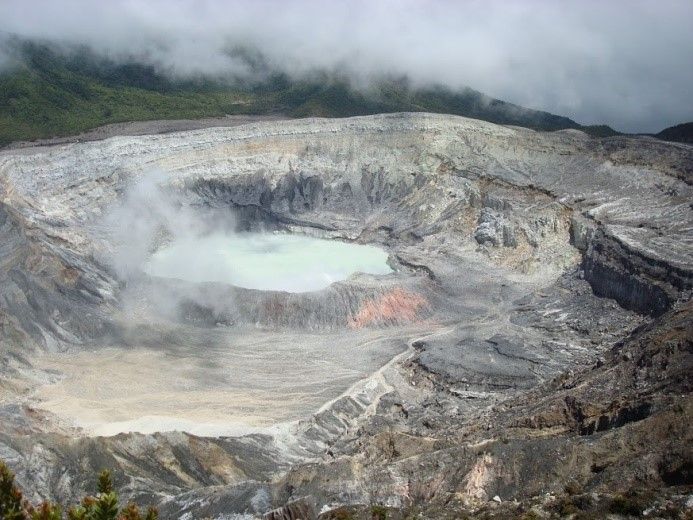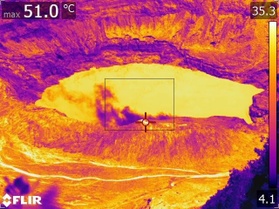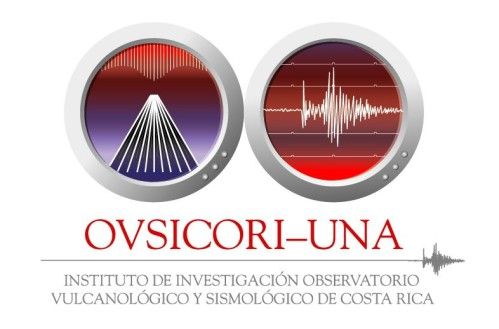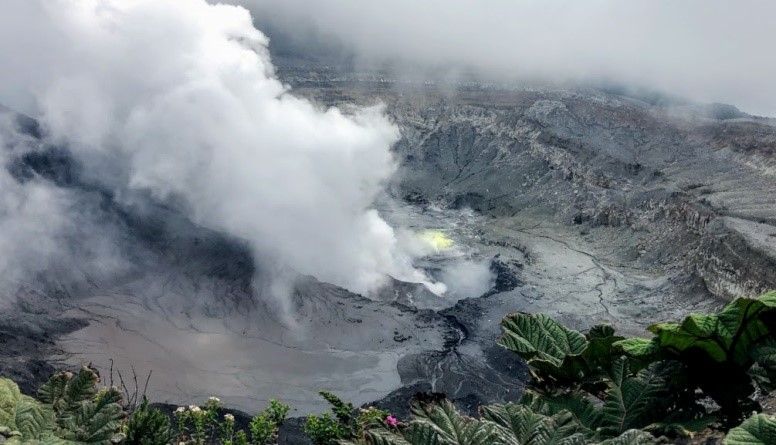

Laguna Caliente inside the active crater of the Poás Volcano and associated thermal image of the lake 8,885 feet or 2,708 meters in altitude
Two important tools which were used here up on the Poás Volcano were the Lighting Passport smartphone spectrometer thermal imaging cameras, both of which helped me to document the diffectent elements of this ecosystem of the National Park. The Lighting Passport was used to test and measure the different sunlight levels and environmental aspects like temperature and humidity here at the Poás Volcano summit and in the many other volcanic microclimate areas of Costa Rica.
The thermal cameras are used to document the surface temperatures of objects further away that may pose certain hazards if one was to get too close, like an active fumarole for example. These two instruments The Lighting Passport and the thermal imagers allow us to observe and analyze many different aspects of the climate and natural sunlight. I used these instruments in several different places around this volcano, other volcanoes and several other important sectors of the country so we could better understand the interaction between fumaroles and our atmosphere. We also used the Lighting Passport to research and record data for studying how natural sunlight contributes to the color change in the Poás Volcano acid lake through selective absorption of light. This light data collected from the Poás Volcano summit also helps us to cultivate and research cloud forest tropical plants species, exotic flora and even endangered tree species by using supplementary LED units in cultivation greenhouses in the subtropical region Florida where scientists are actively searching strategies to counter climate change..
The projects we are working on here in the area of the cloud forest is concerning lighting effect from fumaroles which pump out the water vapor, carbon dioxide, sulfur dioxide and other gases of volcanic origin. All of these gases and aerosols will play a role in absorbing or scattering solar radiation directed at the Earth. We tested the sunlight intensity and spectra in the sunny areas just outside the crater area, and then tested and studied any fluctuations in intensity and spectra from the sunlight transmitting through the fumarole of steam and volcanic gases. The effect the natural sunlight has on the acid lake and its interaction with colloidal particles in the water of the Poás Volcano active crater lake Laguna Caliente were also focal points of our investigation.
Right up front it was obvious that the sunlight intensity levels fluctuated rapidly. Since the clouds passed right by us the sunlight would be temporarily clouded and the relative humidity would skyrocket from 30% to 70% within one minute, and then the sunlight levels would increase and the humidity would be back down to around 40% humidity the next minute. This rapid fluctuation would occur frequently during the entire day due to the altitude and the geographic location of Costa Rica. This climate fluctuation was very normal in the Poás Volcano microclimate area of Costa Rica. The cloud passage and humidity fluctuations also corresponded to fluctuations in illuminance as there would be brief periods of high illuminance and then when thick cloud coverage arrived, naturally there would be very low illuminance. Illuminance is measured in lux and is the measure of illumination per surface area of a surface of an object like a leaf of a plant for example.










Lighting Passport smart phone spectrometer testing the natural light at the summit of the Poás Volcan
The dominant wavelength of the color was also in the blue region of the spectra at 489-490 nanometers. This is the wavelength of the spectrum color whose chromaticity is on the same straight line as the sample point and the illuminant point. It’s a way to measure the dominant color of the illumination source, in this case the Sun. This spectra is a result of the natural sunlight transmitting through the atmosphere and interacting with humidity and aerosols from the volcano before it reached the Earth’s surface here at the summit of the Poás Volcano where we took measurements. By the time the photons reach the Earth’s surface here at the Poás Volcano crater they are partially absorbed, reflected and scattered by the atmospheric gases. The natural sunlight reaching this area has a dominant wavelength of 489-490.



Lighting Passport measurement from an extremely cloudy day with poor visibility (left) and measurements taken during a sunny day with clear visibility (center & right), these charts show extreme variance due to all of the atmospheric variables



Nitrogen dioxide concentrations in Costa Rica on July 24 and 27th taken from Windy
Aermod plots of the Poás Volcano on May 30, 2019. This day we had an influence of Poás volcano to the area of coffee plantations. This meteorological wind pattern is not normal. The normal wind is to the west or southwest.





Aermod plots of the Poás Volcano on May 30, 2019 dispersing over several coffee plantations such as Starbucks Hacienda Alsacia.
Alsacia and Doka coffee plantations are to the south of the Poas volcano around 11 km away. This place is near to Sabana Redonda, where the University LAQAT-UNA made measurements of rain around the Poas volcano two years ago. The next table showcases the values that were found.
Punto de muestro | Conductividad µS/Cm | NO3-(mg/L) | SO42-(mg/L) | |||
cirri | 3,74 a 5,31 | 16 a 90 | <2,5 | 0,9 a 9,4 | <0,8 a 3,7 | 3,3 a 10,3 |
La Arena | 3,68 a 6,70 | 12 a 109 | <2,5 | 1,0 a 27,4 | <0,8 a 6,4 | <0,8a26,4 |
Tacares | 3,02 a 7,65 | 19 a 460 | <2,5 | 1,3 a 59,4 | <0,8 a 1,6 | <0,8 a 3,4 |
Sabana Redonda | 4,42 a 5,21 | 12 a 38 | <2,5 | 1,4 a 2,4 | <0,7 a 1,4 | 3,2 a 5,8 |

Rainwater collection points south of the Poás Volcano and the corresponding distance from the active crater
This data below was collected in side of the Poas Volcano national Park
| Punto de muestro | PH | Conductividad µS/Cm | F-(mg/L) | l-(mg/L) | NO3-(mg/L) | SO42-(mg/L) |
| Casa de Guarda Parques | 3,65 a 5,22 | 7 a 123 | <2,5 | <1,2 a 17,1 | <0,8 a 1,3 | <0,8 a 23,7 |
| El Mirador | 2,50 a 3,39 | 176 a 1120 | <2,5 a 66,3 | <1,2 a 300,8 | <1,1 | <20,0 a 249,1 |
| Centro de Visitantes | 3,86 | 19 a 460 | <2,5 | 6,9 | <0,8 | 5,1 |
| Colinas | 3,40 a 4,17 | 12 a 38 | <2,5 | 1,6 a 19,2 | <0,8 a 8,9 | <0,8 a 51,4 |

Rainwater collection points from within the National Park of the Poás Volcano
Ian Godfrey, BS. BA.,
Management & Global Busines
(University of South Florida) United States of America
María Martinez Cruz, PhD.,
Geochemistry & Volcanology
(OVSCORI-UNA) Universidad Nacional de Costa Rica
Geoffroy Avard, PhD.,
Responsible for Volcanic Surveillance Program
(OVSCORI-UNA) Universidad Nacional de Costa Rica
José Sibaja Brenes, M.Sc.,
General Director of Scientific Laboratory for Atmospheric Chemistry
(LAQAT-UNA) Escuela de Química, Universidad Nacional de Costa Rica
Rez Mani, PhD.,
Application Scientist for Allied Scientific P

Special thanks to the contributors from OVSCORI-UNA, the National Meteorological Institute of Costa Rica and Environmental Observatory of the National University of Costa Rica and Allied Scientific Pro.
